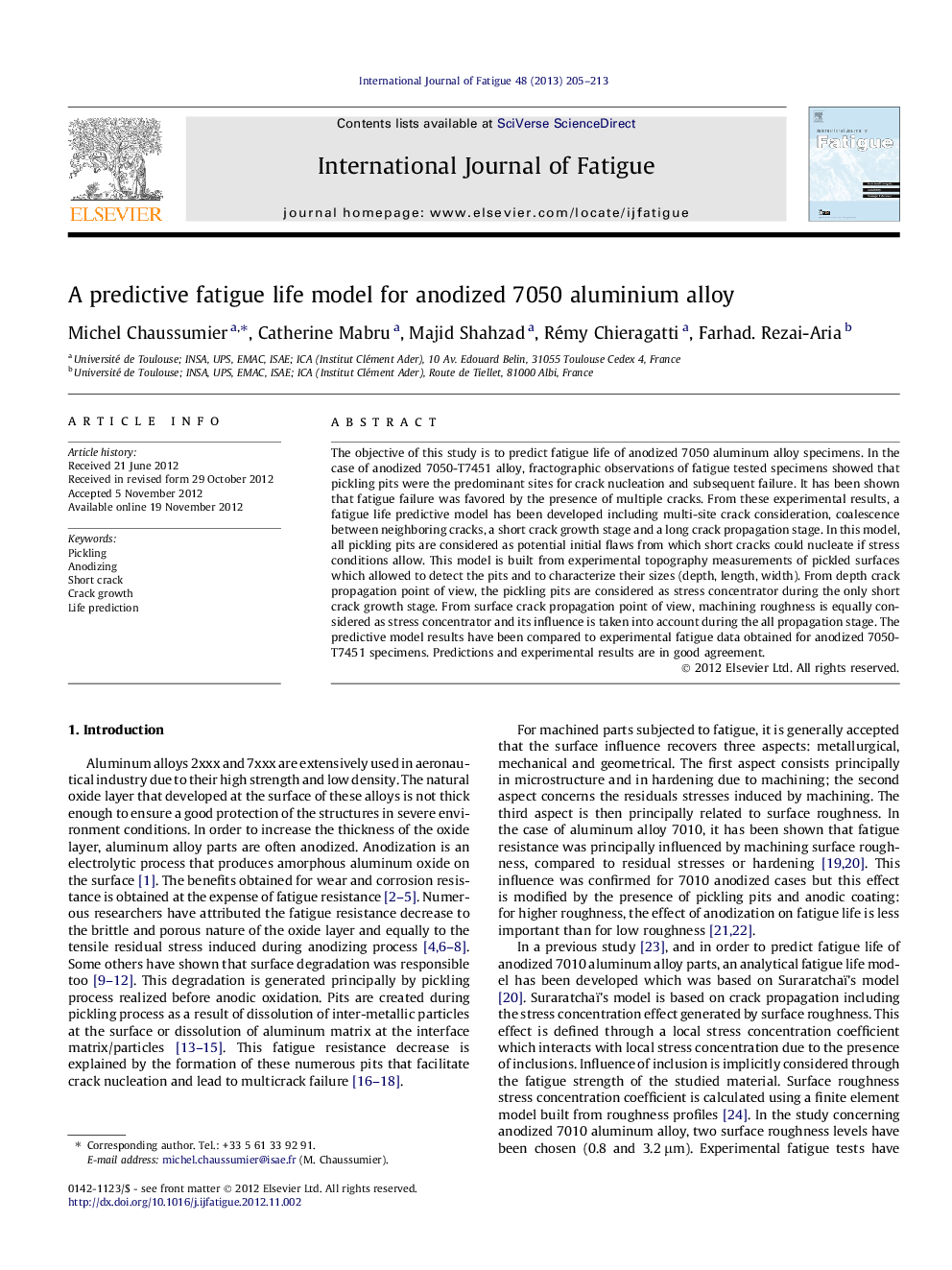| Article ID | Journal | Published Year | Pages | File Type |
|---|---|---|---|---|
| 780890 | International Journal of Fatigue | 2013 | 9 Pages |
The objective of this study is to predict fatigue life of anodized 7050 aluminum alloy specimens. In the case of anodized 7050-T7451 alloy, fractographic observations of fatigue tested specimens showed that pickling pits were the predominant sites for crack nucleation and subsequent failure. It has been shown that fatigue failure was favored by the presence of multiple cracks. From these experimental results, a fatigue life predictive model has been developed including multi-site crack consideration, coalescence between neighboring cracks, a short crack growth stage and a long crack propagation stage. In this model, all pickling pits are considered as potential initial flaws from which short cracks could nucleate if stress conditions allow. This model is built from experimental topography measurements of pickled surfaces which allowed to detect the pits and to characterize their sizes (depth, length, width). From depth crack propagation point of view, the pickling pits are considered as stress concentrator during the only short crack growth stage. From surface crack propagation point of view, machining roughness is equally considered as stress concentrator and its influence is taken into account during the all propagation stage. The predictive model results have been compared to experimental fatigue data obtained for anodized 7050-T7451 specimens. Predictions and experimental results are in good agreement.
► Surface roughness acts as a stress concentrator. ► Pickling pits explain the decrease of fatigue strength of 7050 anodized aluminium alloy. ► A FEM of the sub-surface volume is built from surface roughness measurement. ► The fatigue predictive model include multi cracks initiated from numerous pickling pits. ► The fatigue predictive model include a short crack propagation stage.
